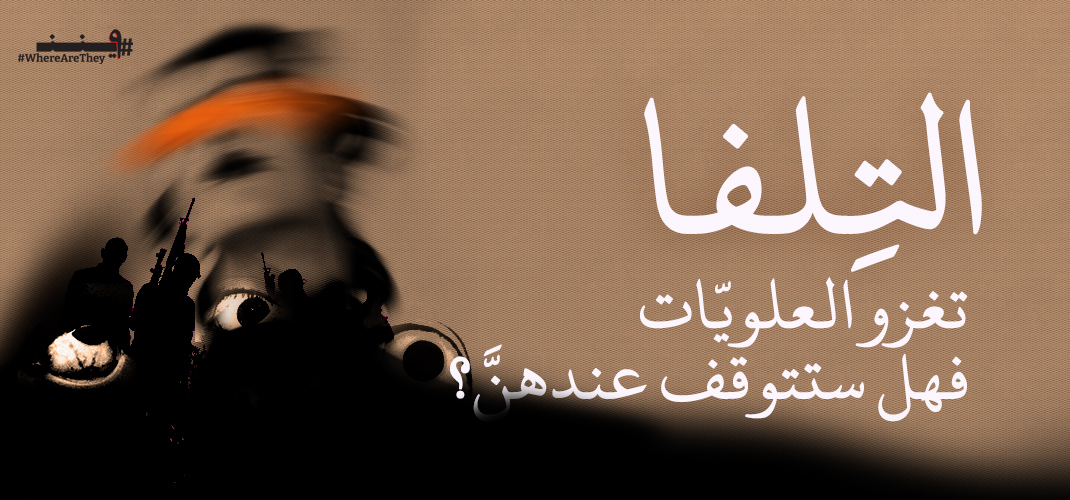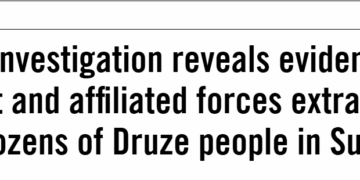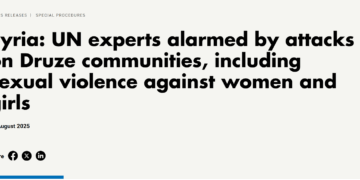By: Noha Sweid
The film Difret (2014) provides a cinematic portrayal that exposes the position of the female body within the social fabric of rural Ethiopia during the 1990s. Based on the true story of Aberash Bekele, the film reopens the discussion of traditional customs—foremost among them the practice of telefa, which is rooted in abduction and forced marriage. Within this system, custom legitimizes violence and grants men control over women, reinforced by a social environment that normalizes such entitlement.
Against this powerful and deeply entrenched custom stands the modern state’s law, fragile and limited in its reach. The film illustrates how legal authority collides with the roots of custom and its dominance over collective consciousness. Through this confrontation, Difret invites the viewer to rethink the meaning and foundations of justice. When faced with a social system that legitimizes violence and prosecutes the victim instead of the perpetrator, the film raises an urgent question: Is justice derived from written law, or from the inherited norms that society treats as a higher moral authority that even transcends the state itself?
Difret recounts the story of its protagonist, Hirut (played by Tizita Hagere), a fourteen-year-old girl living in a rural village whose life is suddenly overturned by tragedy. Alongside her stands Meaza Ashenafi, a courageous lawyer from Addis Ababa and co-founder of the Ethiopian Women Lawyers Association, who plays a decisive role in the story.
Hirut is kidnapped on the day she celebrates her school success. While returning home, a group of men on horseback abducts her, and their leader rapes her. It is later revealed that this man had previously asked her father for her hand in marriage, but the father refused, wanting his daughter to continue her education. After this refusal, the man resorts to one of Ethiopia’s oldest traditions known as telefa, which allows men to abduct underage girls and repeatedly assault them until they become pregnant, thereby forcing both the girl and her family to accept the marriage “to protect her reputation.”
The film opens with a rural scene: Hirut walking home from school, surrounded by the rhythms of daily life and the joy of her achievement. In the background, her abductors’ horses draw closer, their hoofprints marking the earth. The visual composition immerses the viewer in the natural landscape and rural life, offering a sensory awareness of place while highlighting the individual’s vulnerability within a traditional power structure ruled by custom and social hierarchy.
The girl’s joy intertwines with a subtle sense of danger, revealing the duality of rural life: education as a gateway to transformation, and the simultaneous imposition of patriarchal control through mechanisms such as abduction. Director Zeresenay Berhane Mehari’s use of wide shots and distant angles places the girl at the center of a social tension stretched between freedom and threat. Through close-ups and deliberate editing, he creates a visual contrast—a shot of the girl smiling in celebration, followed by a shot hinting at the horses, symbols of masculine power—preparing the viewer for the film’s central act of abduction.
The film’s opening sequence resonates with a tragic event in Syria, where a young girl from the town of Salhab, in the Hama countryside, was gang-raped by a group of armed men. Hirut’s story provides a broader analytical framework connecting these two realities, illustrating how control over women is continually reasserted in different contexts—whether through rape leading to forced marriage, the violation of the body under various pretexts, or the use of women as tools for political coercion and economic blackmail. This reality worsens in the absence of law and with the growing influence of armed factions and rogue actors whose tribal loyalties outweigh their allegiance to the state. It reflects an effort to re-establish behaviors reminiscent of eras of conquest, where threat becomes embedded within the social order rather than appearing as isolated incidents.
The film situates the abduction of women in Ethiopia within its historical and cultural framework, portraying it as a socially sanctioned tribal custom while maintaining a critical and moral stance that refuses to justify violence. It depicts abduction as an act of aggression that violates the girl’s rights, and presents legal confrontation as a necessary step toward reclaiming the dignity of the female body. The film’s dramatic adaptation focuses on the psychological and social consequences of the practice, simplifying events to strengthen the narrative’s moral impact—allowing the viewer to focus on the ethical dimension rather than on the complexity of events alone.
What happens legally in Syria regarding the phenomenon of abducting Alawite women resembles what Difret depicts. The formal authorities often refrain from holding the perpetrators accountable, and the situation is further complicated by denial or silence within the local community, making this phenomenon deeply rooted in specific social and cultural contexts. The recurring abductions in Syria align with the film’s central idea: they reveal the reproduction of a parallel authority that tolerates the abduction of women—an act sometimes practiced under the guise of custom or cultural tradition—even though it is condemned both legally and morally.
The film offers a model for reading customary violence through visual and dramatic language, providing a critical framework for understanding violations that occur in contexts of legal and social collapse. It demonstrates how cinema can confront the gap between entrenched traditions, revenge-based legacies, and individual rights.
The next day, the film’s protagonist manages to escape, seizing her abductor’s gun. Yet she is soon discovered and surrounded again, leading her to shoot and kill him. This incident becomes the moral and legal axis of the film: will the girl be treated as a murderer or as a victim defending her own life?
The director focuses on this pivotal moment using low camera angles and fast movement that heighten the tension, allowing the viewer to experience the protagonist’s psychological turmoil. The film clearly takes a moral, liberatory stance, showing that the act of killing arises from the girl’s right to dignity and self-protection. It transforms the incident into a platform for legal debate about the woman’s place in society, rather than a mere question of procedural guilt or punishment. Despite simplifying some historical details of the real case, the film retains its essence as a symbolic trial of customary violence against women—inviting audiences to confront the moral and social implications of individual decisions and their impact on collective consciousness.
In Syria, the abduction of women occurs almost daily—particularly among Alawite women—at the hands of armed men, militias, and undisciplined individuals who act with impunity amid the state’s deliberate or negligent absence. The state’s failure to protect women deepens their vulnerability and reinforces mechanisms of control over them. This absence of state protection raises a serious question: can the right to self-defense and dignity in Syria become an act of revolutionary justice within an environment dominated by impunity and the collapse of law?
Analyzing this phenomenon through the lens of Difret reveals two parallel structures: one is a social order inclined to deny or reproduce abduction through entrenched customary and cultural justifications; the other is a moral and legal framework that categorizes such acts as blatant violations of human dignity.
Hirut is arrested by the local police, who decide to detain her pending trial for murder. Meanwhile, lawyer Meaza Ashenafi—played by Ethiopian actress Meron Getnet—hears about the girl’s case on the radio in Addis Ababa. She immediately drives three hours to the remote village, determined to defend the girl herself.
Ashenafi’s presence in Difret represents the embodiment of law within a space dominated by custom. She stands as a symbol of legal feminism in a conservative Ethiopian society. The scenes depicting her courtroom work—her discussions with the judge, her written arguments—grant the law a visible and moral presence that challenges the authority of custom. The film portrays her as a counterforce to the customary system, reshaping social thinking, rehabilitating moral concepts, and balancing restorative justice with lived violations. In real life, Ashenafi played a pivotal role in Aberash Bekele’s case, and her advocacy later led her to high judicial and governmental positions.
Her role in Difret contrasts sharply with Syria’s reality, where an independent judiciary capable of protecting women is largely absent—leaving a vacuum in which parallel authorities and rogue actors impose their own legitimacy and exercise violence.
The courtroom scene in Difret forms the film’s dramatic climax, intertwining multiple narrative levels: legal arguments, villagers’ testimonies, and the clash between customary norms and national law. The director distributes focus among judges, the lawyer, and the young protagonist. Close-up shots of villagers’ testimonies convey social division and communal pressure—some siding with custom, believing that abducting girls (telefa) is a legitimate right, while others take a more complex, supportive stance toward the girl.
The telefa phenomenon in Ethiopia, as portrayed in the film, reflects the abduction of girls for forced marriage sanctioned by tradition. Social history may contextualize it within a particular culture, yet both morality and law condemn it. This practice exposes how violence is used to maintain patriarchal authority and lend legitimacy to social domination through the control of the female body.
Similar dynamics unfold in Syria, where women are abducted for political purposes, forced marriage, rape, or torture. Some groups justify abducting women of different religions and enslaving them, framing such acts as “religiously permissible” while bypassing state law. This reality places women in direct confrontation with unofficial powers—just as in the Ethiopian context.
Difret thus offers a visual and intellectual model for confronting systemic violence, demonstrating that change becomes possible when legal power and social advocacy align. It is a direct lesson that can inform how both local and international actors address comparable violations in Syria.
The film concludes with a legal decision that transforms the course of Hirut’s life. Facing a possible death sentence, she is ultimately acquitted after Meaza Ashenafi convinces the court that her act was legitimate self-defense. Hirut is released, yet her village’s council imposes a symbolic punishment: exile from her community, while her father is forced to pay compensation to the family of her abductor.
The film also portrays Hirut’s younger sister, whose withdrawal from school following the incident reflects a father’s attempt to protect her from the same fate. This detail parallels the Syrian context, where reports indicate that some families have stopped sending their daughters to universities or distant schools out of fear of abduction. This atmosphere of fear shrinks women’s safety and freedom, affecting their education and future opportunities.
One of the film’s most significant achievements lies in transforming Aberash Bekele’s story from a local case into an international issue that demanded legal and social attention. Major international media outlets noted that the story inspired judicial and political reform efforts in Ethiopia to ban abduction and forced marriage. The film’s success demonstrates cinema’s power to shift debate from a limited local framework to an international public platform, revealing how legal culture and art can shape global awareness of women’s rights.
The film’s production structure also played a crucial role in its success. Supported by global artists and producers such as Julie Mehretu and executive producer Angelina Jolie, Difret reached a wide and diverse audience. This international exposure not only amplified advocacy for women’s protection but also exerted symbolic pressure on Ethiopia’s legal and social systems. The film stands as a living example of cinema’s ability to transcend artistic expression and become a tangible instrument of legal and social change.
It is important to note, however, that Aberash Bekele herself expressed concern after the film’s release, saying she had not been adequately consulted and that the film’s exposure of her personal story had placed her at risk. A temporary court order even suspended the film’s screening in Ethiopia, raising critical questions about the ethics of storytelling based on the real lives of people still confronting the consequences of their experiences.
Thus, producing a film that highlights a human rights issue cannot rely solely on the strength of its message. It must also safeguard those whose stories inspired it, ensuring they receive continued support and protection after the film’s release. This balance between dramatic power and ethical responsibility is what defines genuine integrity in socially engaged cinema.
Difret employs a docudrama cinematic style that combines historical realism with emotional impact. The director’s choice to shoot on location enhances the authenticity of the story’s setting, giving viewers a tangible sense of place and time. Through close-ups, he captures the psychological depth of the characters, immersing the audience in their trauma and resilience. The soundtrack is used thoughtfully, amplifying emotion without excess, maintaining a balance between affect and realism. The performances—especially by the female leads—convey the characters’ pain and inner strength with precision and empathy, though some secondary village characters remain underdeveloped.
Ultimately, Difret reveals the individual’s capacity to confront injustice and social constraint. Aberash Bekele’s personal ordeal became the foundation for her human rights activism: today, she works to protect women and girls and to combat forced marriage. Her story continues to inspire many in Ethiopia and beyond. Despite some cinematic imperfections, the film leaves a profound emotional mark, showing how courage and determination can alter the course of society and bring justice to life.





